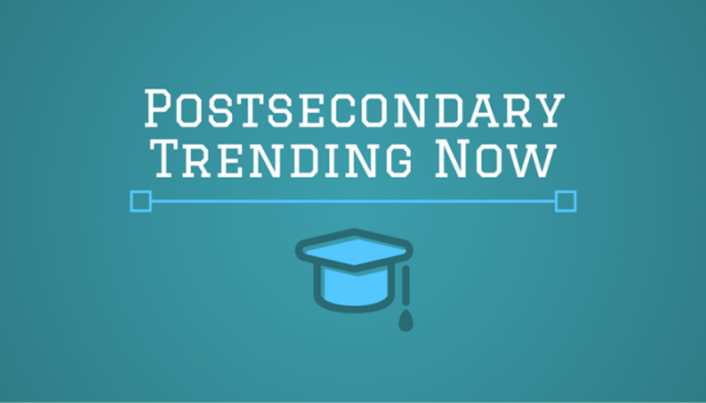
Those of us engaged in support of postsecondary teaching and learning (T&L) face a sometimes bewildering array of possible options and directions. We find ourselves constantly asking questions, such as “should we invest in x?”, “where do we go from here?”, and “are we headed in the right direction by doing y?”
While few (if any) of us have definitive answers, a number of resources are available to help us wrestle with those questions. Recently, I became curious about these resources, wondering: do they all tell the same story? Do they agree or disagree on the directions for learning and student success? So I thought I would corral a few and take a comparative look.
One set of resources tracks developments in technology, while the other identifies trends that are both informing and driving higher education.
Developments in Technology
With respect to this first set, I chose these four well-established resources:
- the ECAR (EDUCAUSE Center for Analysis and Research) Top Ten IT issues for 2016;
- the ECAR top ten strategic technologies for higher education;
- the New Media Consortium’s 2016 Horizon Report for higher education (HR);
- the 2016 EDUCAUSE Learning Initiative (ELI) Key Issues survey (KI).
If we compare these, what story do they tell us about teaching and learning? Are there synergies across these four resources that might tell a larger tale about key directions for T&L?
I think there are. Here are the items shared by at least two of these four resources:
- BYOD and mobile devices in T&L. Both the HR and the Top Ten Issues call attention to this topic. Indeed, the latter lays heavy emphasis on this, with it being both the #1 (“mobile devices in T&L”) and #5 (“T&L access via mobile”) issues. This could probably also be phrased “bring your own app” as both the hardware and the software associated with mobility become more diverse and affordable.
- Learning analytics. This is named explicitly in three of the resources (HR, KI, and the Top Ten IT issues). Analytics is also mentioned in the fourth resource, the strategic technologies, albeit as business analytics. The HR provides one nuance, mentioning learning analytics together with adaptive learning. Indeed, the new IMS standard Caliper, providing a kind of “esperanto” for learning data, has the potential to accelerate progress with both learning analytics and integrated student advising.
- Learning spaces. This appears in the KI roster (#6 in terms of total votes) and also in the HR, albeit in the more specific angle of “makerspaces.” There has been a resurgence of interest in learning spaces over the past several years, lead by the realization that synchronicity can provide great value for a learning community. Combined with growing evidence about the value of active learning, learning space design has emerged as an important way to encourage learners and educators alike to pursue more active learning engagements.
- Academic transformation/optimizing edtech. I could be accused of overreaching here, but I think these are really getting at the same thing. “Academic transformation” is language that comes from the ELI Key Issues survey. The idea is that what is needed, in addition to incremental and tactical improvements in T&L, is something more strategic and institutionally transformative. It is very similar to the main idea of the recent Breakthrough Models Institute and Breakthrough Models Academy programs (presented by EDUCAUSE and Next Generation Learning Challenges with support from the Bill & Melinda Gates Foundation). “Optimizing edtech” is #2 on the Top Ten IT Issues roster, followed by this definition: “Collaborating with faculty and academic leadership to understand and support innovations and changes in education, and to optimize the use of technology including understanding the appropriate level of technology to use.”
Trends Informing Higher Ed
Two established resources also track the trends. These are (once again) the Horizon Report, which follows both trends and challenges, and the ECAR publication Trend Watch 2016. If we compare these two, do they agree with one another on which trends are informing the course of higher ed T&L? The answer is yes — and there are three areas of agreement:
- Learning spaces. Both resources strongly agree on this point. The HR describes this as the trend to design “learning environments to accommodate more active learning,” which dovetails fairly exactly with TW.
- Blended learning. The HR characterizes this trend broadly as “blended learning designs” while TW is a bit more specific (flipped classroom). Both are pointing at the same phenomenon, namely growing acceleration away from traditional lecture course models and towards course designs that blend face-to-face and online venues.
- New learning engagements. Although they emphasize different aspects, here again I think the the HR and TW publications are pointing at the same phenomenon: fostering more meaningful learning engagements through deeper engagement by means of learner-centered course designs. The HR describes this trend as the “shift to deeper learning approaches” while TW focuses on personalized learning by means of adaptive technology.
It appears that three main themes emerge among all of these resources: each agrees that the most important and influential “forces” at work in higher ed T&L are blended learning, learning space design, and the transformation of course models and learning engagement design. Hard to argue with that point of view.
Malcolm Brown is director of the EDUCAUSE Learning Initiative.
